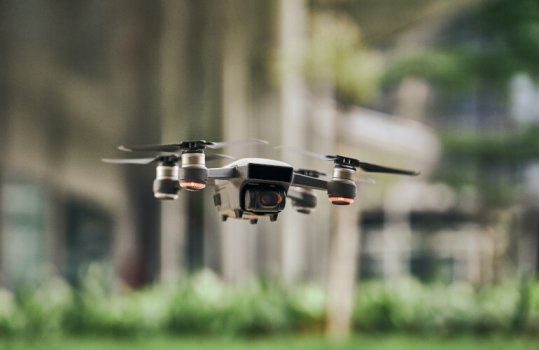K
Kathleen Martin
Guest
With growing demand for clean energy across multiple sectors, an increasing number of consumers are transitioning to solar power for their homes. According to recent statistics, the U.S. alone has installed enough solar panels to power 21.8 million homes, and advancements in panel hardware have made solar energy more accessible to consumers by dropping installation costs.
However, solar companies are still exploring new ways to keep up with rising consumer demand and prepare for a more sustainable future. Some companies, including national solar and battery installer Sunrun, have turned to drones to transform the planning and design process. Along the way, these companies have discovered a variety of safety and efficiency benefits that have changed the way they do business.
The Rise of Residential Solar and Consumer Demand
The start of the modern movement toward widespread residential solar can be traced to Congress’ Solar Energy Research, Development and Demonstration Act of 1974, which aimed to make solar energy options feasible and affordable to the public. Paired with 2006’s Solar Investment Tax Credit, consumers soon had new financial and sustainability incentives to reduce their carbon footprint. And demand isn’t subsiding. The size of the U.S. residential solar PV market is expected to reach $14.1 billion by 2028, mainly due to the increasing awareness of alternative energy options and technological improvements over the past few decades.
While the increase in consumer demand means fantastic things for the sustainability movement, the solar industry is still running into many roadblocks. Like many other sectors, it faces supply-chain challenges and a global shortage of semiconductors, which are integral in converting sunlight to electricity. Furthermore, when it comes to the solar power industry, recruiting, hiring, and training technicians to keep up with the heightened demand is a lengthy process that costs companies precious time and valuable resources.
In response, companies like Sunrun have turned to drones for on-site surveys and mapping of installation environments. Utilizing this technology to work alongside the site technicians can help avoid delays and accelerate installation timelines.
Continue reading: https://www.solarpowerworldonline.com/2021/12/elevating-worker-safety-in-residential-solar-with-the-use-of-drones/
However, solar companies are still exploring new ways to keep up with rising consumer demand and prepare for a more sustainable future. Some companies, including national solar and battery installer Sunrun, have turned to drones to transform the planning and design process. Along the way, these companies have discovered a variety of safety and efficiency benefits that have changed the way they do business.
The Rise of Residential Solar and Consumer Demand
The start of the modern movement toward widespread residential solar can be traced to Congress’ Solar Energy Research, Development and Demonstration Act of 1974, which aimed to make solar energy options feasible and affordable to the public. Paired with 2006’s Solar Investment Tax Credit, consumers soon had new financial and sustainability incentives to reduce their carbon footprint. And demand isn’t subsiding. The size of the U.S. residential solar PV market is expected to reach $14.1 billion by 2028, mainly due to the increasing awareness of alternative energy options and technological improvements over the past few decades.
While the increase in consumer demand means fantastic things for the sustainability movement, the solar industry is still running into many roadblocks. Like many other sectors, it faces supply-chain challenges and a global shortage of semiconductors, which are integral in converting sunlight to electricity. Furthermore, when it comes to the solar power industry, recruiting, hiring, and training technicians to keep up with the heightened demand is a lengthy process that costs companies precious time and valuable resources.
In response, companies like Sunrun have turned to drones for on-site surveys and mapping of installation environments. Utilizing this technology to work alongside the site technicians can help avoid delays and accelerate installation timelines.
Continue reading: https://www.solarpowerworldonline.com/2021/12/elevating-worker-safety-in-residential-solar-with-the-use-of-drones/

